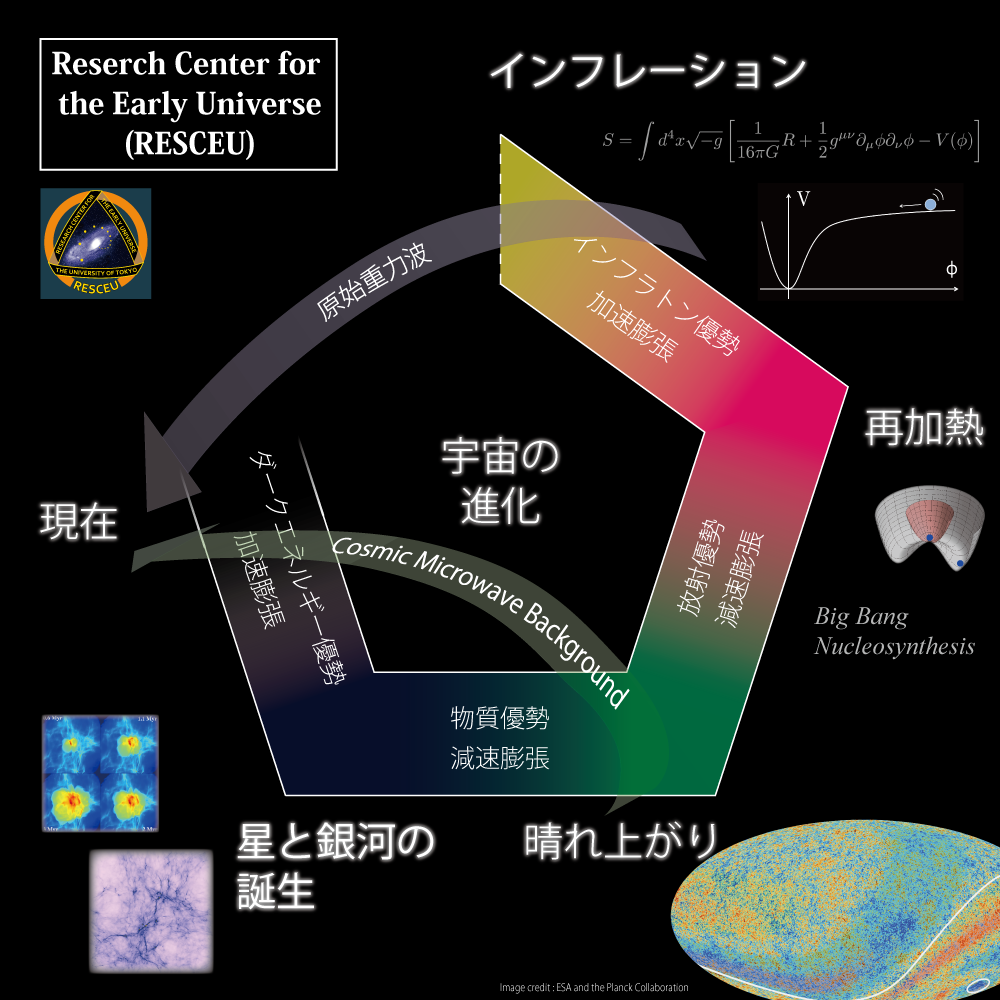
The ultimate goal of this project is to clarify the birth and evolution of the Universe in terms of theories of fundamental physics as well as cosmological observations.
Over the last decades, cosmological observations using new technologies have developed greatly, and our fundamental view of the Universe has significantly advanced to establish the new standard model of the Universe, which incorporates cosmic inflation with the classical Big Bang model and the concordance values of the cosmological parameters. In this model, inflation in the early Universe not only gives rise to the homogeneous, isotropic, and spatially flat background spacetime but also generates density and curvature fluctuations of quantum origin, thereby predicting the initial condition for the formation of the cosmic structure. While this model successfully reproduces the observed anisotropy of the cosmic microwave background radiation and large-scale structures, there remain fundamental questions such as the specific mechanism of inflation in the particle-physics context as well as the identities of dark matter and dark energy. Among them, the origin of the dark energy, which causes the accelerated cosmic expansion today, is the most serious question, involving diverse fields of fundamental sciences ranging from astronomy to particle physics.
We approach with these fundamental problems from two directions. One is the top-down approach, based on the theory of fundamental physics; this approach is used to construct a consistent scenario for cosmic history from the early Universe to the observed Universe. The other is the bottom-up approach, aimed at revealing with high precision the current state of the Universe through observational data. We conduct a number of large numerical simulations of the evolution of the Universe from the formation of the first stars to the large-scale structures. In connection with the latter, we are in close collaboration with other researchers who are conducting wide-field optical surveys using the Subaru telescope, as well as performing gravitational wave experiments. In particular, focusing on the construction of the KAGRA gravitational wave detector, we have started research on the data analysis necessary to establishing gravitational wave astronomy.




